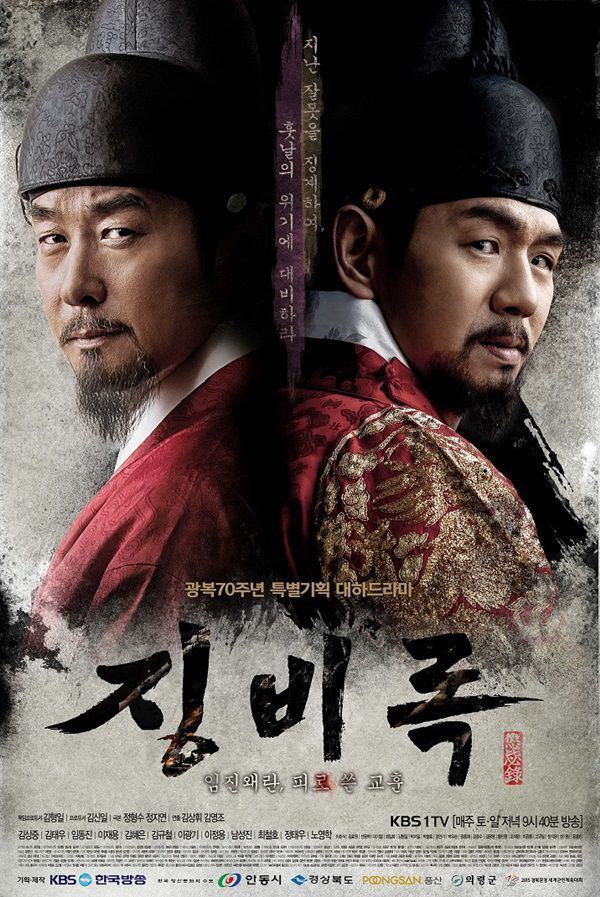9.2 /10 1 Votes9.2
Hangul 징비록 Revised Romanization jing-bi-rok | 92% AsianWiki Hanja 懲毖錄 McCune–Reischauer ching-pi-rok | |||||||||||||||||||||||||||||||||
 | ||||||||||||||||||||||||||||||||||
People also search for The book of corrections, Nanjung Ilgi | ||||||||||||||||||||||||||||||||||
The Jingbirok (Hangul: 징비록; Hanja: 懲毖錄 known in English as the Book of Corrections), written in Hanmun, is a first hand account of the Imjin War written by high ranking Joseon scholar-official Ryu Seong-ryong. Party to high level decision making on the allied Ming-Joseon side and able to access all Joseon records, Ryu Seong-ryong's Jingbirok has become an invaluable source in the study of the conflict, and Chinese-Korean-Japanese relations. In 1969 the Jingbirok was listed as the 132nd of the National Treasures of South Korea.
Contents
- Jingbirok teaser fm
- Ryu Seong ryong
- Aim of the Jingbirok
- Publication history
- Structure
- Known printed editions
- References
Jingbirok teaser fm
Ryu Seong-ryong
Ryu Seong-ryong (1542–1607) was born in Uiseong, in Gyeongsang province, during the Korean Joseon Dynasty, to a yangban family of the Pungsan Ryu clan. Passing the Samsai level of the Gwageo civil service examination in 1564, and the Mungwa level in 1566, Ryu rose through the ranks of the scholar-official bureaucracy holding various positions including Jwauijeong (Second State Councillor) and Ijo Panseo (Minister of Personnel). At the time of the 1592 Japanese invasion of Korea Ryu held the position of a provincial Dochechalsa. During the war Ryu was appointed Yeonguijeong (First State Councillor), and it was in this capacity that he helped direct the Joseon defences, being responsible for all Joseon military units and leaders, including Yi Sun-sin and Gwon Yul.
After the war in 1598, Ryu was ousted from office by factional infighting, although he was later rehabilitated he refused to serve again in high office. The Jingbirok was written and compiled at this time by Ryu in his home village, now preserved as Hahoe Folk Village, in today's Andong, North Gyeongsang Province.
Aim of the Jingbirok
Ryu Seong-ryong wrote the Jingbirok in order to prevent such an invasion from happening again, reflecting on the mistakes. In the preface he writes that during the conflict the Joseon state suffered "the loss of three capitals, and collapse everywhere" (三都失守,八方瓦解) reflecting on his own role in this he wrote that he was "not up to the task the nation entrusted, the ills the nation suffered was because of threats not grasped, this cannot be swept away, nor can death atone for this guilt" (無似受國重任,於流離板蕩之際,危不持,顛不扶,罪死無赦). Ryu placed the blame for the disaster suffered by Joseon on his own inadequate emphasis on national security, and was therefore resolved to properly document hard lessons dearly paid for, with the hope that following generations could avoid the mistakes that his had made. Although the Jingbirok includes details of Japanese atrocities, the focus of the Jingbirok is on Joseon failures, and Ryu is harsher in his assessment of his own side than he is of the enemy.
Publication history
The Jingbirok was written in Hanmun, using Classical Chinese characters used as logograms to write Korean, one therefore did not have to be able to speak Korean to read the Jingbirok , it was as equally accessible to the classically educated scholars of China, Japan and Vietnam as it was to classically educated Koreans.
Structure
The early form of the Jingbirok was completed by the time of the 37th year of King Seonjo's reign (1604) and consisted of sixteen scrolls and a coda:
By 1633 (11th year of King Injo's reign) this had evolved into a widely read two volume format known as the Seoaejip consisting of the Jingibrok and Ryu Seong-ryong's The Anthology of Seoae (Hangul: 서애집; Hanja: 西厓集)). In 1647 the Jingibrok was issued as a single stand alone volume.
